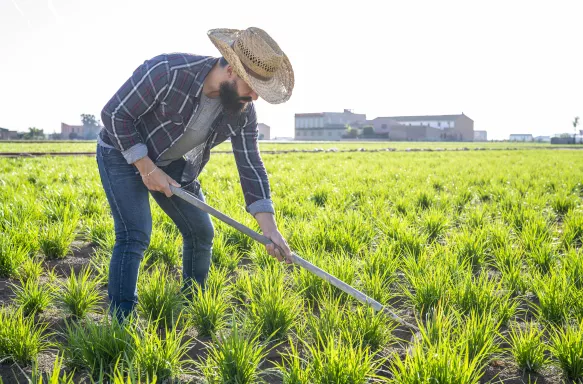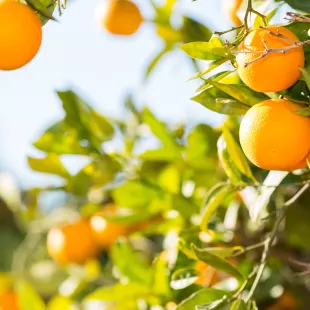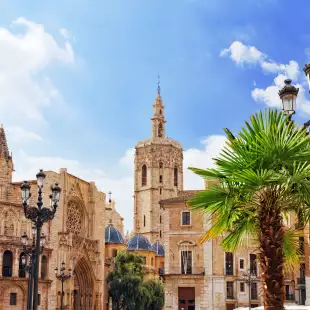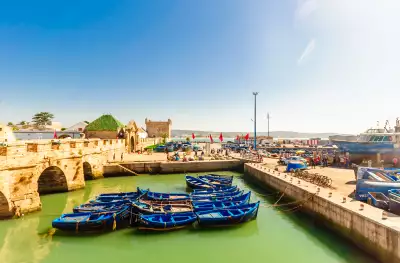An Insider’s Guide to Our Escorted Tour of Valencia, Spain

Discover the history and culture of Spain - one of our Product Managers for Solo Traveller programme, talks us through how he put the tour together
by The Curious Traveller
I’ve always had a burning desire to visit Valencia and its region. Often ignored by people attracted by the bigger, brighter city lights of Madrid and Barcelona, the Moorish gems of Andalusia, or the foodie hotspot that is San Sebastian, Valencia is often left to its own devices. But for those in the know, Valencia manages to combine all three into one ideal destination. So I jumped at the chance to explore this destination and started working my way through our library of travel literature.
Soon I was on a plane to get some first-hand experience of the sights to ensure that they would work well as a tour because no amount of reading books and online research is worth seeing something with your own eyes. I decided to start in the north and work my way southwards, so my first stop was the Ebro delta. I was informed at the nearby town of Tortosa that there is an eco-museum of the region in Deltebre, the main town in the delta. The outside of the museum is somewhat inauspicious and dusty, but once you’re through the reception area and into their park behind you’re transported into a miniature marshland ecosystem, complete with walkways, traditional farmers cottages and a dizzying variety of local plants, all with informative panels explaining the symbiosis between man and nature. To cap it all there is a mini lagoon with a bird-watching hide. Within the space of two minutes there I managed to spot a heron catching a couple of fish! Something I’ve not managed to see on any of the hundred times I’ve walked along the Trent at home in Burton. Nearby is also a family-run cruise company that offers boat journeys through the delta waterways that allow you to spot the things you’ve just learned about at the museum. Add to that the nearby coastal town of Peñiscola built on a rocky peninsula jutting into the sea, with whitewashed houses reminiscent of a Greek island and I had the first day of the tour already decided.

Further inland you climb steadily upwards until you reach the Meseta Central, the vast Iberian plateau that dominates the heart of Spain. My destination was Teruel, a mid-sized city that is famous for its Mudéjar architecture. This uniquely Spanish style evolved during the period immediately following the area’s recapture from Moorish control, but before the total reconquest of Iberia, when both Christians and Muslims co-existed side by side in relative peace and harmony. Mudéjar is characterised by the incorporation of typical Islamic stylistic elements, such as arabesques and geometric tiled patterns, into Christian architecture. The most splendid example of the Mudéjar style are Teruel’s cathedral and the sumptuous church of San Pedro. The latter is particularly famous in Spain as being the final resting place of the Lovers of Teruel, a sad, but true, story of star-crossed lovers whose union was thwarted for years and who ultimately came to a tragic end. Though unable to be together in life the lovers are now next to each other in death through eternity. The resemblances to Romeo and Juliet may not just be coincidental, as their story may have in fact inspired Shakespeare.

The Moorish influence is even stronger to the south of Valencia. The small, hilltop town of Xixona (also spelled Jijona) is synonymous throughout Spain for turrón, the almond-based sweet that is an obligatory part of any Iberian Christmas celebration. Whilst turrón has become a quintessential Spanish icon, its origins are decidedly Arab, for it was they who introduced the recipe to Iberia. All of this we learn when we visit Xixona’s turrón museum, which is also a working factory. Obviously, I had to have a taste for quality control purposes! Then a little further south still is the town of Elche. Despite its proximity to bustling Alicante, it’s a peaceful, laid-back town. Its defining feature is the vast palm grove (the largest in Europe) that occupies the very heart of the old town and gives it a very Middle Eastern atmosphere. It is here, more so than the famous cities of Andalusia, where the Moorish heritage is strongest in Spain.

And finally, there is Valencia itself, a vibrant city that straddles history and modernity with ease and panache. The former is symbolised by the old town, home of the city cathedral (which holds what many believe to be the Holy Grail of the Last Supper) and the majestic Silk Exchange building from when Valencia was one of Europe’s principal trading ports; whilst the modernity is showcased by the stunning City of Arts and Sciences. This group of buildings that consists of an opera house, world-class science museum, public greenhouse, aquarium and convention centre were designed by Santiago Calatrava, himself a Valencian native, and showcase his unique, visionary style. Both these poles of the city are linked by the Turia gardens, a lovely ribbon of green that meanders through the city where Valencians love to stroll and relax during their long lunch breaks.

Buildings and museums are interesting, but having a chance to experience local culture is just as important, especially if it includes food. And whilst San Sebastian may be the current gastronomic hotspot, Valencia certainly punches above its weight. I was pleasantly surprised to discover horchata, a drink made from tiger nuts that, while ubiquitous in Valencia, is so unique that even in neighbouring regions it is impossible to find. I managed to find a local guide called Miguel, who quit his job working for a recruitment consultancy to promote Valencia’s agricultural heritage. His enthusiasm was infectious, as he showed me the whole process from growing the tiger nuts (which, despite their name, are a type of grass and the “nuts” are their little tubers), drying them, processing, all the way to the finished product, which we enjoyed with a fartón, a tubular Valencian pastry.

Though if we are on the subject of food, one cannot mention Valencia without talking about paella, Valencia’s pride and joy. Here in the UK we may think of paella as a Spanish seafood dish, Valencians will vehemently sneer at such bastardisation of their dish. True Valencian paella is made with chicken, rabbit, green beans, saffron and locally grown short-grain rice, and any hint of prawns or calamari are regarded as rather untraditional. My local contact recommended I visit a nearby masia (a Valencian hacienda) where they do paella cooking demonstrations. As you enter the grounds of the masia, a long drive between the orange groves, for which the region is famous, leads to the bright yellow villa, dripping with bougainvillea. Here I was met by Carmen, the daughter of the owners, who showed me the old house and the extensive grounds and gardens. It was here that the famous impressionist painter Ignacio Pinazo came to stay to escape a cholera outbreak in the city. Many of his paintings, including those of the house, can now be seen in the Prado gallery in Madrid. Carmen showed me where our groups will be taught how to make paella, which they will then enjoy during a gala evening together on the last day of the tour.

Of course, as well as all the attractions and experiences, it is also important to find a quality hotel for our groups to stay that is in the right location. Over the course of two days, I inspected close to a dozen hotels before I was finally satisfied that I had found the right one: the Eurostars Rey Don Jaime has well-appointed rooms, an abundant and varied breakfast selection, and is only a stone’s throw from the Turia gardens and so has great access to both the historic old town and the City of Arts and Sciences. I’m sure that our clients who travel with us on this tour will enjoy discovering this less-visited corner of Spain and partaking of its natural, architectural and culinary delights.
We hope this has inspired you to explore and discover Valencia & the Orange Grove Coast for Solo Travellers or other Spanish tours yourself. If you have any questions, please do not hesitate to contact us.
I’m an intensely curious person and love finding out how things work. Travel allows you to understand the world more deeply, and get a better insight into people and cultures, which are now more interconnected than ever. To then be able to share what I have learnt with a wider audience is immensely rewarding and satisfying.
- The Curious Traveller







